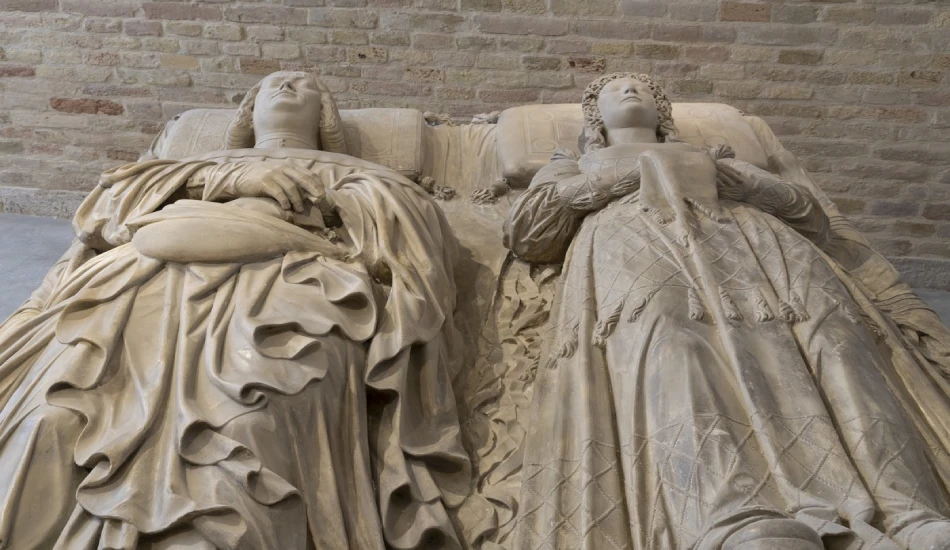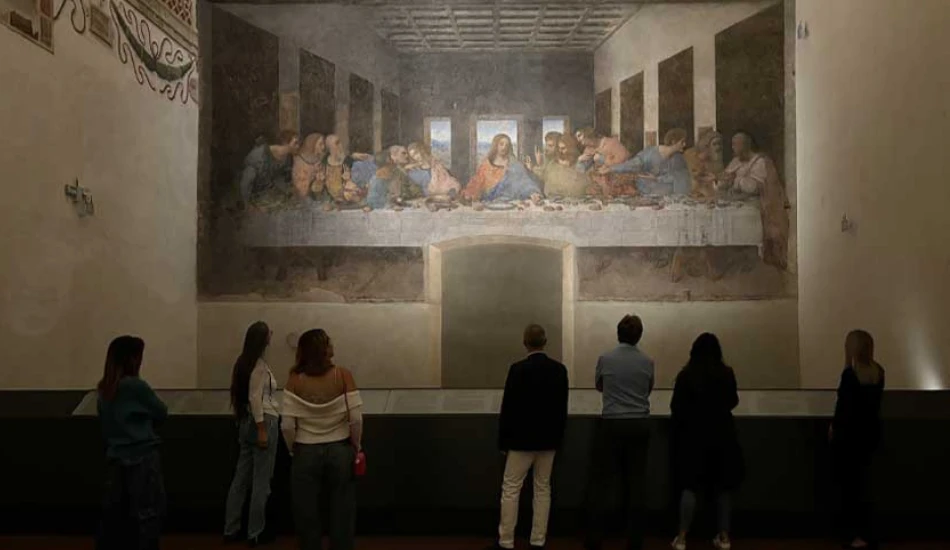You probably know that The Last Supper is painted inside Santa Maria delle Grazie.
But what you don’t know — the near-destruction, the stolen art, the secret frog fountain — is what makes this place unforgettable.
Here are 10 jaw-dropping facts about Santa Maria delle Grazie that completely change how you look at Milan’s most mysterious church.
It was supposed to be a regular chapel, then a duke changed everything
This church started as just a small chapel for locals until Duke Francesco Sforza decided to tear it down and build a monument to match his power.
By the 1460s, the Dominican convent rising in its place wasn’t just about faith. It was about legacy.
That legacy still stands today, brick by brick, nearly six centuries later.
The church was built to house a family, in death

In the 1490s, Duke Ludovico Sforza had a wild idea: expand the church and use it as a tomb for his entire dynasty.
He brought in Donato Bramante, one of the greatest Renaissance architects, to make it happen.
The irony? Only Ludovico and his wife Beatrice were ever buried there.
So much for a family legacy.
Must Read: Practical tips to visit Santa Maria delle Grazie
The Last Supper is not in a museum! It’s on a wall you can’t move
You’re not just “going to see a painting.”
You’re walking into a dining hall where Leonardo painted directly onto the wall — no frame, no glass.
The mural sits in the exact spot it was created 500+ years ago.
That’s not a reproduction. It’s the real thing.
And you only get 15 minutes in front of it.
Duomo di Milano: Since Milan Cathedral is just 20 minutes by walk from Santa Maria delle Grazie, some tourists visit them on the same day. Find out how to go from Di Milano to Santa Maria. If you don’t have much time and can only visit one, find out why Santa Maria delle Grazie is a better option.
It’s not a real fresco, and that’s why it nearly disappeared
Leonardo hated the limitations of frescoes, so he tried a new technique: tempera and oil on dry wall.
It gave him more control, but also turned the painting into one of the most fragile works of art in the world.
Within 20 years, it had already started crumbling.
Most of what you see today is the result of centuries of desperate conservation.
A WWII bomb almost wiped it out by 24 meters

On August 15, 1943, a British bomb blew apart the roof of the refectory where The Last Supper lives.
The north wall, the one holding the mural, should have collapsed.
It didn’t, thanks to a last-minute wall of sandbags, mattresses, and scaffolding.
The fact that it survived is nothing short of a miracle.
RECOMMENDED
Opening hours of Santa Maria delle Grazie
How to reach Santa Maria delle Grazie
What to see at the Last Supper church in Milan
There’s a second masterpiece, and nobody talks about it

Everyone looks one way in the refectory, but turns around.
Facing The Last Supper is another 15th-century fresco: The Crucifixion by Donato Montorfano.
It’s full of emotion, saints, and vibrant color, and unlike Leonardo’s, it’s held up beautifully.
Most tourists leave without ever knowing it exists.
The chapels inside were VIP family tombs
Walk into the church, and you’ll see chapels lining both sides.
Those weren’t random.
Each one was privately owned by elite Milanese families, used for burials, family prayers, and showing off their status through art.
In some, you’ll find incredible frescoes hidden in plain sight.
A Titian masterpiece was stolen, and now lives in Paris
Yes, Santa Maria delle Grazie used to have a Titian.
It was called The Crowning with Thorns and hung inside the refectory.
Then Napoleon’s troops rolled in during 1797 and took it to France.
Today, you’ll find it in the Louvre Museum, one of Italy’s greatest losses in the art looting spree.
There’s a frog fountain in the courtyard

Tucked behind the church is the Cloister of the Frogs, and yes, it’s named after the tiny bronze frogs perched on the central fountain.
It’s quiet, green, and often empty, the perfect place to breathe after your timed mural visit.
It’s also one of the best-kept secrets inside the complex.
It’s a UNESCO site, not for one reason, but two
In 1980, Santa Maria delle Grazie was named a UNESCO World Heritage site.
Not just for the architecture, but also for The Last Supper.
It’s rare for a building and a painting to be jointly recognized, but it’s hard to ignore when two Renaissance legends (Bramante and da Vinci) leave their mark on one site.
Final words: This church is full of stories, and you’re standing inside them
Every corner of Santa Maria delle Grazie holds a secret.
From near destruction to stolen masterpieces, from royal ambition to architectural brilliance, it’s a place that invites curiosity.
Whether you’re here for 15 minutes or 3 hours, don’t rush it.
Take a closer look at the stories that are still on the walls.

